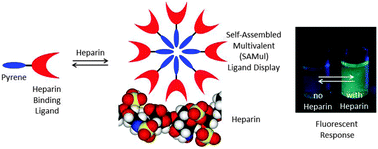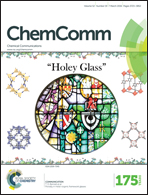Pyrene-based heparin sensors in competitive aqueous media – the role of self-assembled multivalency (SAMul)†
Abstract
Amine-functionalised pyrene derivatives are reported and their ability to detect heparin via a fluorescent response determined – different responses are observed dependent on whether self-assembled multivalent binding between sensor and analyte takes place, and ratiometric heparin sensors which can detect this surgically-relevant polyanion in competitive media are reported.

- This article is part of the themed collection: Host–guest chemistry

 Please wait while we load your content...
Please wait while we load your content...